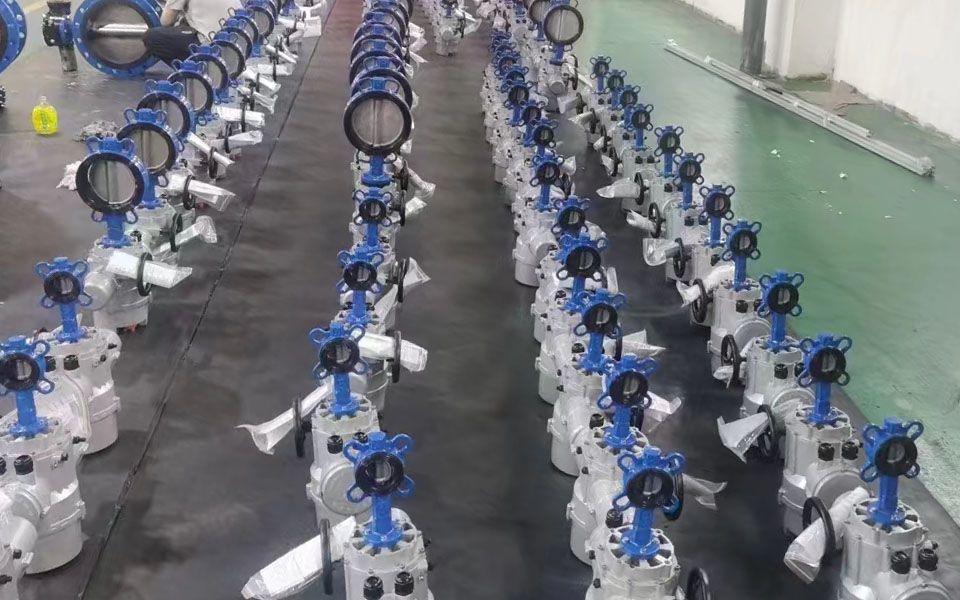INDUSTRY NEWS
Multi-functional use and working principle of butterfly valve
Butterfly valve, a disc-shaped butterfly plate as the center, by rotating around the valve shaft to achieve the opening and closing function of the valve. It is widely used to control a variety of fluids including air, water, steam, as well as special fluids such as corrosive media, mud, oil, liquid metals and radioactive media. In the pipeline system, the butterfly valve mainly plays the role of cutting off and throttling. The opening and closing principle is simple and clear: the valve stem drives the butterfly plate to rotate 90°, which can be fully opened or closed. At the same time, by adjusting the deflection Angle of the plate, the flow rate of the medium can be precisely controlled. Butterfly valves are widely used in various engineering systems, such as producer, gas, natural gas and other industrial fields, as well as civil occasions such as building water supply and drainage.
Functional use:
The butterfly valve, whose closing part is disc-shaped, rotates around the valve shaft to realize the opening and closing function, is an indispensable cutting and throttling device in the pipeline system. Its opening and closing principle is simple, through the stem to drive the disc rotation 90°, you can easily achieve a fully open or closed state. In addition, the butterfly valve can precisely control the flow of the medium to meet a variety of engineering needs.
Electric control butterfly valve:
As an important variety of electric valves and electric regulating valves, electric regulating butterfly valves play a key role in the field of industrial automation control. Its connection methods are diverse, including flange type and sandwich type, which can be selected according to actual needs. During installation, ensure that the installation position, height and inlet and outlet direction meet the design requirements, and pay attention to the media flow direction and the valve body arrow to ensure a firm connection.
Selection rules:
When selecting the butterfly valve, it is necessary to determine the appropriate type and specification according to the actual working conditions and needs. At the same time, attention should also be paid to the valve's high temperature resistance, corrosion resistance and other properties to ensure that it can work stably in harsh environments. In addition, reasonable installation and maintenance is also a key factor to ensure the long-term stable operation of the butterfly valve.
Stem diameter is an important factor to consider when selecting butterfly valves. For multi-turn open-stem valves, because the stem diameter may not be able to adapt to the electric device, special care is needed in the selection. However, for local rotary valves and dark rod valves in multi-rotary valves, although the problem of the passage of the valve stem diameter is not the main consideration, the match between the valve stem diameter and the keyway size should still be fully considered during the selection process to ensure normal operation.
The operating torque is the key parameter for selecting the valve electric device. The motion process of the electric butterfly valve can be controlled by stroke, torque or axial thrust. Because the operating characteristics and utilization rate of the valve electric device are affected by the valve type, the operation specification of the device, and the position of the valve on the pipeline or equipment, the correct selection of the valve electric device is essential to prevent overload. Generally, the output torque of the electric device should be at least 1.2 to 1.5 times the maximum torque of the valve operation.
In addition, the operating thrust of the electric butterfly valve is also a factor that needs to be considered. The main structure of the valve electric device has two types: one is not configured with thrust disk, direct output torque; The other is to configure the thrust disc, through the thrust disc valve stem nut to convert the output torque into the output thrust.
In addition, the number of turns of the output shaft of the valve electric device is also an important consideration. It depends on the nominal diameter of the valve, stem pitch and the number of threads. The correct calculation method is to multiply the valve opening height H with the valve stem drive thread pitch S and the number of valve stem threads Z to obtain the total number of turns M that the electric device should meet.

